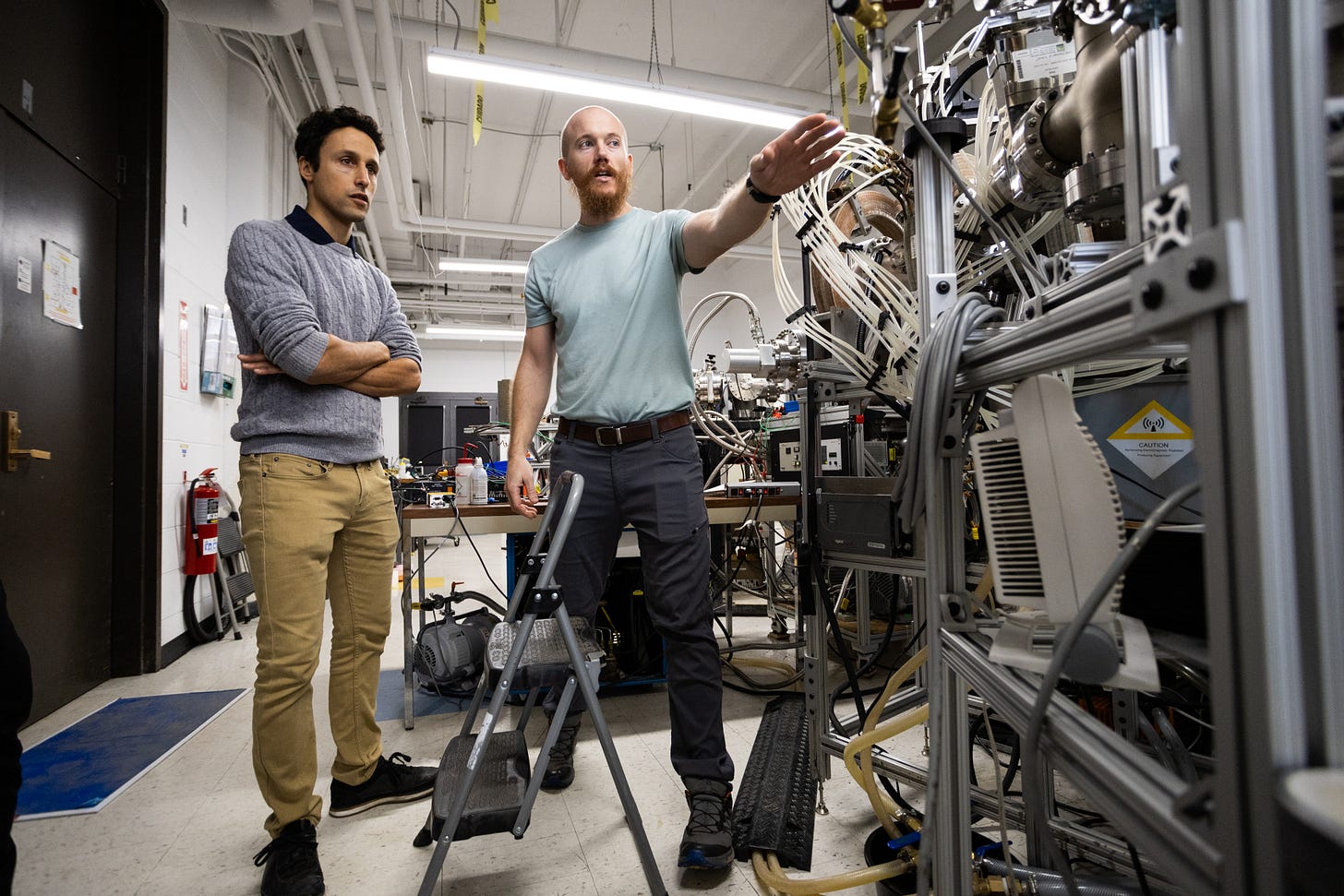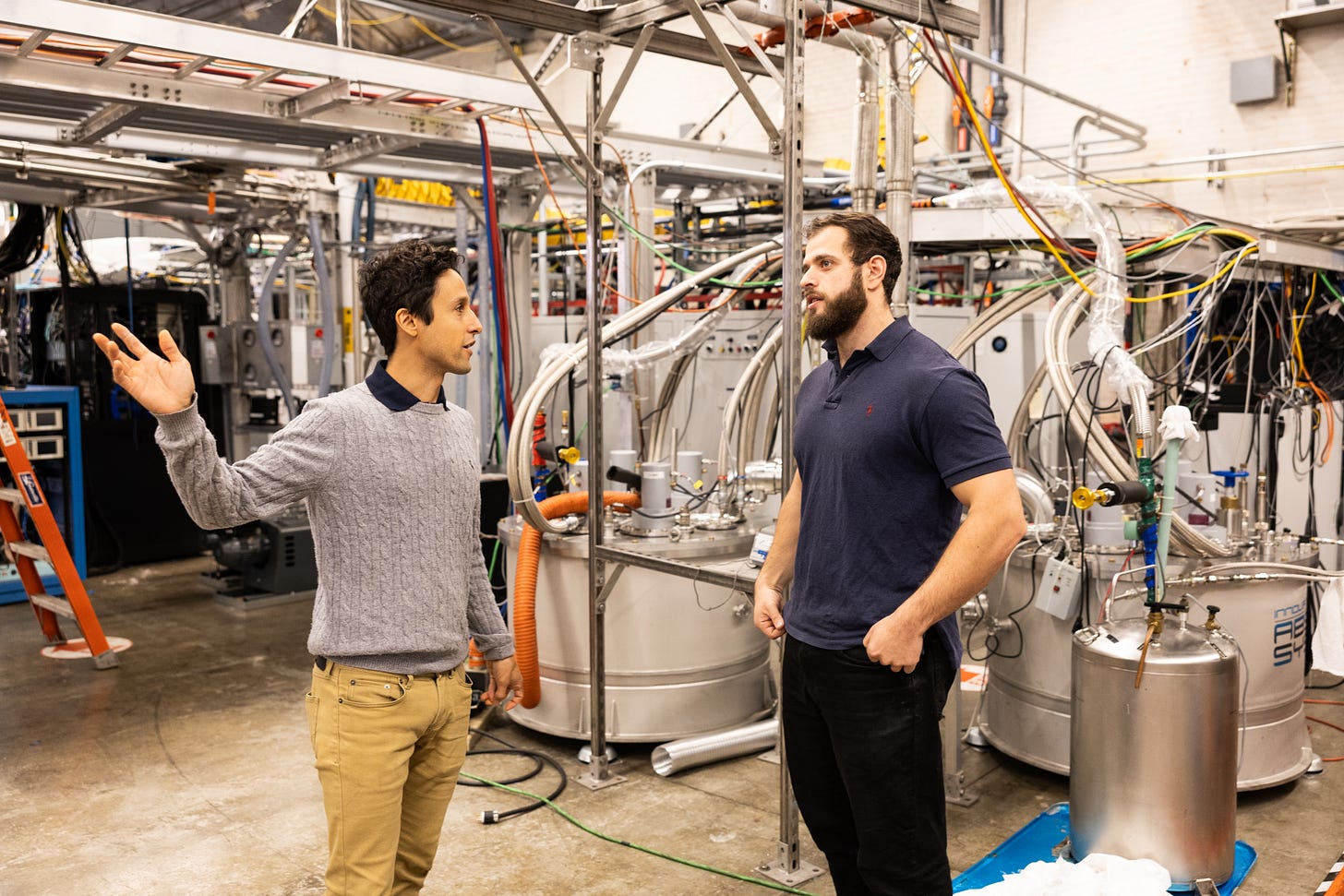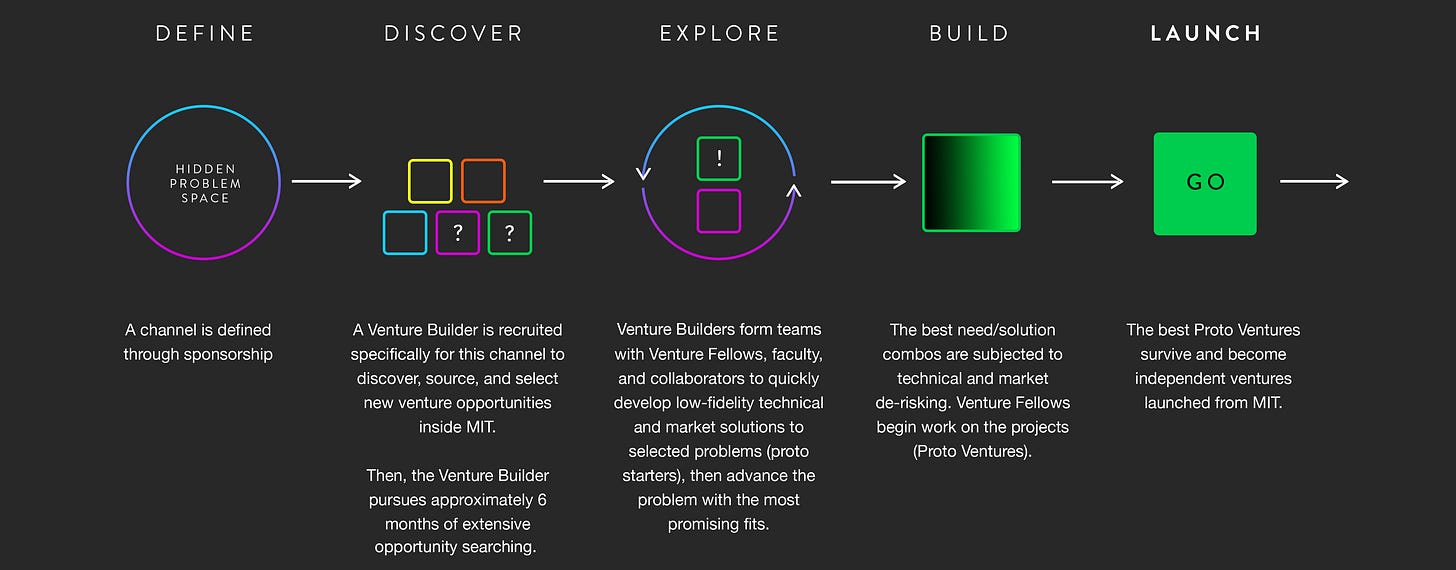The MIT Proto Ventures Process: Sneak Preview
How we're carrying Proto Ventures' mission to commercialize new venture ideas at MIT
The mission of Proto Ventures is to launch new ventures from MIT tech. So, how do we do this exactly?
In this post, I’ll share a sneak preview of the Proto Ventures process.
The Venture Builder
I am the venture builder for Proto Ventures’ Clean Energy & Fusion Channel. My job is to identify and launch one or more commercial startups that leverage MIT research for clean energy within two years. I started this process in early 2023, and since then, we’ve also welcomed our first five Venture Fellows.
Phase 1: Discover
In the first phase, we embed ourselves within a research community and dive deep in an industry area — in my case, clean energy. During this time, which typically lasts six months, we generate an initial list of market needs1 and technological capabilities that could form the basis for new venture ideas.
We identify technological capabilities by:
Attending seminars and thesis defenses on campus
Meeting with researchers to learn about what they are working on
Reading academic papers and dissertations
Reading old (long forgotten) publications and patents
Speaking with MIT Licensing Office
Engaging in brainstorm sessions with interested researchers2
And we assess each tech capability based on criteria such as:
Technology Readiness Level (TRL)3
Intellectual property status
People (e.g. researchers) involved
Time and cost to commercialize
Key risks
Technical specifications (if applicable)
Resources (people, reports, websites)

In parallel, we build a preliminary database of underserved but large market needs that a new venture could conceivably address. We do this by:
Following industry news and funding opportunity announcements
Speaking with investors (e.g. VCs) and research grant administrators (e.g. ARPA-E)
Attending industry conferences
Reading analyst reports
Speaking with company executives
Primary market research
We assess these needs based on criteria like:
Relevant industry vertical(s)
Severity of need
Total addressable market (today, and by 2035)
Solutions to this need today, and their shortcomings
Resources (people, links)
Next, we generate actual venture ideas4. An idea starts by matching up a market need with one or more technological capabilities that could address it. Organizing guided brainstorms and product ideation sessions with interested researchers is key to generating promising venture ideas. We deliberately include researchers from diverse subject areas and backgrounds, and we typically also organize a symposium where external experts help us select the most promising venture ideas.
By the end of this stage, we aim to have about 25 venture ideas, and a stage gate that selects some of those venture ideas to become team projects.
Phase 2: Explore
The goal of this phase is to flesh out a small number of team projects. We iteratively refine each venture idea, with a focus on de-risking the main failure modes (typically: team, market, and technology).
During this phase, we focus on:
Forming a team around each selected idea (with Venture Fellows, faculty, collaborators, and mentors)
Developing low-fidelity technical proofs of concept
Doing customer research and defining what the product would be5
Developing low-fidelity business models (e.g. business model canvas, preliminary pitch deck, and rough financials)
The role of the Venture Builder: My role in this phase is to lead each team project, basically I’m the ‘proto CEO’ of each project. I’m also accountable for:
Determining what technical or business de-risking activities that need to happen at any given time, and documenting the process and outcomes with stakeholders.
Nurturing members of the MIT community who can support these ideas or take them forward, for example by bringing these ideas to courses like MIT Climate & Energy Ventures or New Enterprises
Cultivating external resources (e.g. investors and mentors) who could help accelerate or guide the most promising ones
Leading the process of fleshing out, de-risking, and down-selecting the most promising ideas and iteratively refining them

By the end of this Explore phase, we aim to have 3-5 projects, each with a team, a pitch deck and supporting business materials, and a technical proof of concept. They aren’t ready to spin out or fundraise yet — and some will die before reaching that stage — but they are ripe for pitch competitions and business model prizes.
Phases 3 and 4: Build & Launch
At this stage, selected team projects become proto ventures6. Our goal at this stage is to have one or more proto venture(s) ready for incorporation and external investment, and poised to change the world.
In Closing
This is, in a nutshell, the process that Proto Ventures follows. Of course, everything is more iterative in real life, but this is the overall template that allows us to to go from the earliest of ideas to the new innovative ventures that will change the world.
Now that you’ve read this far, I’d love to hear from you in the comments section. How does this compare with how your organization does innovation? What would you add, subtract, or tailor to suit the specifics of your own industry?
Many innovation programs in universities start with a technology in mind and go looking for real-world problems that this technology might solve. This is what you might call the ‘tech push’ approach. In contrast, Proto Ventures balances ‘tech push’ with ‘market pull’, where we seek out the biggest open challenges in an industry and then start looking for solutions to these challenges at MIT.
A distinct feature of Proto Ventures is our deep integration within the MIT research community: Venture Builders like myself have an office in a research department (mine is in PSFC), we have lunch with graduate students in the department lounge, we attend thesis defenses and other regular research talks, and we gradually identify the postdocs, research scientists, graduate students, and faculty who can help us solve problems — and who might become startup founders themselves.
It depends on the channel, but we typically look for capabilities at TRL 3-4, with the expectation that the technology will need to mature to TRL 5-6 before spinning out as a commercial venture.
Naturally, finding the right people is an essential part of this stage. We form relationships with as many researchers as possible through informal chats, 1-on-1 lunches, and other conversations. I’m especially looking for people who are interested in helping to commercialize their research, as well as who is most interested in actively becoming involved in entrepreneurial endeavors as a potential founder.
For example, I’ve been looking at opportunities in transoceanic hydrogen and getting excited about a more efficient way of converting ammonia back into hydrogen. In this case, would we sell ammonia cracking equipment to large facilities? Become a turn-key solution provider that also handles a much broader set of equipment? Operate our own ammonia cracking facilities and simply sell the end product (hydrogen)? This is what I mean by determining what would be the actual product.
The prefix proto- comes from Greek prōtos ‘first’. A proto venture is simply a first version of what will eventually become a fully-fledged venture, much like Proto-Indo-European is the early language that eventually gave rise to the entire Indo-European family of languages.





